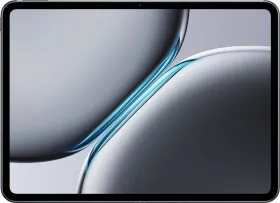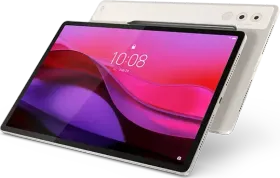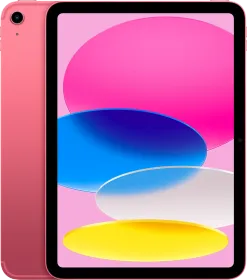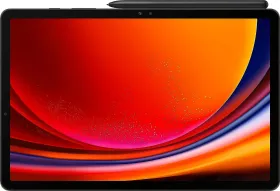OnePlus has been on a roll with tablets, and the OnePlus Pad 3 is their 2025 flagship, billed as the “must-have tablet.” And it’s definitely got the chops to back that claim. We’re talking the Snapdragon 8 Elite chipset, a monstrous 12,140 mAh battery, a 13.2-inch 3.4K LCD that’s a feast for the eyes, and eight speakers.
Throw in OxygenOS 15 with AI features, seamless connectivity with OnePlus phones, and great accessories, and you’ve got a tablet that’s unbeatable value. I’ve been using this tablet for a bit, and I’m ready to share it all with you. Let’s dive in and see if the OnePlus Pad 3 is THE Android tablet you need.
OnePlus Pad 3 Price & Availability
The OnePlus Pad 3 comes in two colors: Storm Blue and Frosted Silver (India-exclusive). It’s offered in two variants:
- 12/256 GB: ₹47,999
- 16/512 GB: ₹52,999
You can purchase it from the OnePlus India website, Amazon, and select offline stores. Early buyers get ₹5,000 off on select cards, plus a free Stylo 2 and Folio case worth ₹7,198.
Pros
- Snapdragon 8 Elite is a performance juggernaut
- 12,140 mAh battery delivers
- 13.2-inch 3.4K LCD is sharp and vibrant
- Eight speakers deliver amazing audio
- Seamless ecosystem with OnePlus phones
- OxygenOS 15’s Open Canvas and AI features are great
- Thin, premium all-metal build at just 5.97 mm
- Keyboard is great
- 80W SUPERVOOC charging is super fast
Cons
- LCD can’t match OLED’s inky blacks
- Front camera is a low-light letdown for video calls
- No fingerprint scanner, just face unlock
- OxygenOS 15 needs a bit more polish
- Wi-Fi only, no LTE option
OnePlus Pad 3 Specifications
- Display: 13.2-inch LCD (LTPS), 3392 x 2400 (3.4K), 7:5 aspect ratio, 315 PPI, 600 Nits standard/900 Nits HBM, 144 Hz refresh rate (60/90/120/144 Hz), 540 Hz touch sampling rate
- SoC: Qualcomm Snapdragon 8 Elite (2 x 4.32 GHz Oryon V2 Phoenix L + 6 x 3.53 GHz Oryon V2 Phoenix M, Adreno 830, TSMC 3 nm)
- RAM: 12 GB (LPDDR5T @ 4266 MHz) / 16 GB (LPDDR5T @ 4800 MHz)
- Storage: 256 GB / 512 GB (UFS 4.0)
- Cameras:
- Rear: 13 MP IMX688, 1/2.8-inch, f/2.2, 25mm, 4K/1080p/720p @ 30fps, EIS, 10X digital zoom, LED flash
- Front: 8 MP 1/4-inch, f/2.0, 26mm, 1080p @ 30fps, EIS, 0.8x/1x modes
- Audio: 8 speakers (4 woofers + 4 tweeters), 2 microphones, SBC, AAC, aptX, aptX HD, LDAC, LHDC
- Battery and Charging: 12,140 mAh (dual-cell), 80W SUPERVOOC
- IP Rating: NA
- Connectivity: Wi-Fi 7/6/6E/5/4 (802.11be/ac/a/b/g/n), Bluetooth 5.4 (BR/EDR/BLE, High Power), Type-C port, USB 3.2 Gen 1 @ 5 Gbps
- Biometrics: Face unlock (2D)
- Weight and Thickness: 675 g, 5.97 mm
- Build: All-metal unibody, antenna bands
- OS: OxygenOS 15 (Android 15), 3 years OS + 4 years security updates
- Accessories: OnePlus Keyboard (Bluetooth/pogo pins, 110–165° adjustable), OnePlus Stylo 2 (16,000 pressure levels), tri-fold folio case
OnePlus Pad 3 Review: Unboxing

Unboxing the OnePlus Pad 3, you get the tablet, an 80W SUPERVOOC charger, a USB-A to USB-C cable, and the usual paperwork. No case or screen protector inside, so you’ll want to grab the official tri-fold folio case or a third-party screen guard ASAP.
OnePlus Pad 3 Review: Design and Build
The OnePlus Pad 3 gets a new design refresh. OnePlus has ditched the circular camera bump from the Pad 2 and gone with a corner-mounted camera that fits right in with the OnePlus 13s. It’s a cleaner, more modern look that gives the tablet a flagship look in my opinion.

At just 5.97 mm thick and 675 g, it’s surprisingly slim for a 13.2-inch tablet with a 12,140 mAh battery inside. The all-metal unibody, made from a custom aluminum alloy, feels solid without being too heavy. I carried it around for a day at college, and experienced no issues.
You get two color options: Storm Blue and Frosted Silver. Storm Blue (the one I have) has this bold, almost sci-fi look, while Frosted Silver is more subtle and polished. I’d pick Storm Blue if you want something that grabs attention. The antenna bands are neatly tucked into the design, and the magnetic back makes attaching the keyboard or folio case super easy.

It’s not the most portable tablet out there (isn’t that obvious?) but great for working or watching content at your desk or on the couch. There’s still no IP rating, which is a letdown if you’re planning to use it near water (but why?). That said, the build quality is excellent. It feels premium and durable, easily holding its own against more expensive tablets like the Galaxy Tab S10 series.
OnePlus Pad 3 Review: Display

The 13.2-inch LTPS LCD on the OnePlus Pad 3 is seriously impressive. With a 3.4K resolution (3392 x 2400), 315 PPI, and a 7:5 aspect ratio, everything looks super sharp, whether you’re streaming HDR content, taking notes, or gaming. It delivers vibrant visuals, even if the blacks aren’t as deep as OLED. Still, for an LCD, it’s one of the best around.
Brightness maxes out at 900 Nits HBM (600 Nits typical), which means outdoor visibility is no issue. I used it under direct sunlight and didn’t have to max out brightness. The adaptive 144 Hz refresh rate (switching between 60/90/120/144 Hz) makes scrolling feel buttery, though some apps and games like BGMI default to 60 Hz—manually switching to 120 Hz/144 Hz fixes that.
The 7:5 aspect ratio is great for productivity, giving you more vertical space for docs or split-screen multitasking. While there are slight black bars in videos, they’re barely noticeable in use. Color modes can be tweaked, and the default “Natural” profile strikes the right balance. You also get eye comfort mode, image sharpening, and a video saver for better battery life. It’s a great display.
OnePlus Pad 3 Review: Speakers

The OnePlus Pad 3’s eight speakers, four woofers and four tweeters, are seriously impressive. Perhaps not as good as the iPad Pro, but they’re the best in the segment. They deliver rich, immersive sound with almost no distortion, even at max volume.
And no matter how you hold the tablet, you won’t block them. Watching movies feels like a mini theater, and in games, every sound is sharp and clear. The speakers auto-adjust with orientation, and the dual mics pick up voices cleanly, even in noisy spots. If audio matters, this tablet nails it.
OnePlus Pad 3 Review: Software
OxygenOS 15, running on Android 15, is the brains behind the OnePlus Pad 3. OnePlus has promised three OS upgrades and four years of security patches, which is par for the course at this price. The UI is buttery smooth, with animations that just glide. You get customizable lock screens (Flux themes), themes, and a split-style control center that’s both functional and elegant.

The crown jewel is Open Canvas, OnePlus’ multitasking masterpiece. You can run two or three apps side by side, drag and drop files, and switch between them with a tap. It’s way better than floating windows or basic split-screen, especially when you’re juggling a YouTube video, WhatsApp, and Twitter posts.

The tablet’s smart enough to suggest app pairs, saving you precious seconds. But some apps (looking at you, Plus Messenger) refuse to play nice in landscape mode, forcing you to fiddle with third-party apps to fix it. It’s not a dealbreaker, but OnePlus needs to tighten those screws.


Bloatware is minimal, and the OnePlus browser and App Picks can be disabled. The Photos app supports split-screen browsing, and the Camera app is well-optimized for the large display – most OnePlus apps are. Despite some issues, OxygenOS 15 remains one of the best Android tablet UIs.
OnePlus AI
OxygenOS 15 on the OnePlus Pad 3 includes several AI tools built into the sidebar: AI Writer, AI Reply, AI Summary, and AI Speak. AI Summary and AI Speak work in Chrome and do exactly what you’d expect. AI Writer and AI Reply appear in apps like Twitter, Notes, WhatsApp, and Telegram, generating content or replies based on on-screen context. And, the Notes app expands on this with AI tools for writing and editing.
The photo tools are solid: AI Detail Boost sharpens images, AI Eraser removes objects, AI Unblur fixes shaky shots, and Reflection Eraser cleans up glare. The new Translate app is versatile, with photo, conversation, and live modes.

Circle to Search is faster than Translate for translation, of course. And it can obviously search for things on your screen, including a song playing on your device or around your device. Google Gemini is also here with Gemini Live (camera feed and screen share) and it’s integrated into OnePlus system apps like Clock and Notes.
OnePlus Pad 3 Review: Biometrics
The OnePlus Pad 3 uses only 2D face unlock, which is fast in decent light but slow and unreliable in the dark. It lacks a fingerprint scanner, which feels like a miss at this price. Use a PIN for security and unlock mainly in well-lit areas.
OnePlus Pad 3 Review: Performance

The OnePlus Pad 3 is a powerhouse, running on the Snapdragon 8 Elite, the first tablet in India with this chip. It comes with up to 16 GB LPDDR5T RAM and 512 GB UFS 4.0 storage.
The graphene composite vapor chambers keep temperatures low, around 34 to 40°C even during heavy gaming. Whether editing 4K videos in CapCut, multitasking across multiple apps, or gaming nonstop, it can handle everything without breaking a sweat.
Synthetic Benchmarks
| Benchmark | OnePlus Pad 3 (Snapdragon 8 Elite) |
| AnTuTu v10 | 2,696,194 |
| Geekbench 6 CPU | 3,090 (Single) / 8,994 (Multi) |
| Geekbench 6 GPU (OpenCL) | 18,731 |
| Geekbench 6 GPU (Vulkan) | 24,250 |
| Wild Life Extreme Stress Test | Best: 6,339, Lowest: 4,975, 78.5% |
| Wild Life Extreme Overall Score | 6,071 / Avg FPS: 36.36 |
| Storage Test Score | 193,444 (Read: 3,843 MB/s, Write: 3,450 MB/s) |
Gaming
Gaming on the OnePlus Pad 3 is a delightful experience. BGMI hits 120 FPS after switching to 120 Hz (default is 60 Hz, which caught me off guard) and stays cool at 34°C. The 13.2-inch screen takes some time getting used to, though. Honkai Star Rail, one of the more heavy games, gave me an average 59 FPS and 35°C.


Genshin Impact maintains a steady 60 FPS, running smoothly without any issues at all. Wuthering Waves runs at 59.5 FPS, delivering buttery-smooth gameplay, even at the highest settings. Gaming performance on the OnePlus Pad 3 is flawless.
Day-to-day tasks like editing photos in Lightroom or rendering 4K videos are effortless. The 16 GB LPDDR5T model feels snappy and the RAM management is great too (you can also lock apps to the RAM). The OnePlus Pad 3 is easily the Android performance king of 2025.
OnePlus Pad 3 Review: Cameras
Tablets and cameras rarely mix well, and the OnePlus Pad 3 doesn’t change that. The 13 MP rear camera (IMX688) is good enough for scanning notes or QR codes. You have features like Night mode, panorama, 10X digital zoom, and an LED flash (looking at you, iPad Air). It shoots 4K, 1080p, or 720p at 30fps, but stabilization in 4K is a bit shaky. It’s not meant for serious video, but it handles casual needs just fine.


The 8 MP front camera is decent in decent light but falls apart in low light. Night video calls look grainy and washed out. It supports 1080p at 30fps, includes EIS, and offers 0.8X and 1X modes. It works for selfies and video calls if the lighting’s good, but don’t expect much more.

OnePlus Pad 3 Review: Battery Life and Charging
The 12,140 mAh battery is a beast. OnePlus says it’s big enough to “start a car,” and I’m not arguing. I got 12 hours of screen-on time over three days with mixed use, including gaming, streaming, browsing, and even heavy BGMI sessions squeezed out 3 hours at just 23% battery. It’s a battery monster.
The 80W SUPERVOOC charger takes the Pad 3 from 0 to 100% in around 1h and 30 minutes. This is with Smart Rapid Charging on. Still, it’s crazy fast for a 12,140 mAh battery.
Oh, and the the USB 3.2 Gen 1 port supports external displays, but only in mirror mode, not a full desktop setup like Samsung DeX. Still, whether you’re gaming or cramming for exams, this battery easily powers through without needing a power bank (it could be a powerbank itself).
OnePlus Pad 3 Review: Connectivity Features

If you’ve got a OnePlus, iPhone, OPPO, or realme phone, the OnePlus Pad 3 becomes a perfect sidekick. And with a OnePlus phone, the integration is even better. You can take calls and get all phone notifications directly on the tablet—no need to grab your phone. Just make sure both devices are signed into the same OnePlus account.


The rest of the features work with other devices as well. Screen mirroring is here, where you can drag and drop files. File sharing, file browsing, and clipboard sync all feel so seamless, you’ll forget which screen you’re on.

You can even control your phone from the tablet or vice versa, which is great when your phone’s out of reach. And if you’re out of Wi-Fi range, the tablet auto-connects to your phone’s hotspot, showing a little 5G icon for reassurance.


It’s all easy to set up, just go to Settings > Connection & Sharing > Multi-Screen, and pair your devices. OPPO and realme phones get most of the features except call and notification sync. Apple users can control a Mac and transfer files.
Overall, this ecosystem support makes the Pad 3 a productivity powerhouse, especially if you’re already in the OnePlus ecosystem.
OnePlus Pad 3 Review: Accessories
The OnePlus Pad 3 supports three official accessories: the new keyboard cover, the Stylo 2, and the Tri-Fold Folio Case.
OnePlus Keyboard

Starting with the OnePlus Keyboard, it’s well-built, with larger keycaps, a dedicated AI key that opens Gemini, and full function row for controls like brightness, media, screenshot, and more. There are bunch of keyboard shortcuts too. There is also an NFC tag for quickly pairing it up with you phone.

It connects through pogo pins or Bluetooth and supports angles between 110° and 165°. The touchpad is responsive and supports gestures like two-finger scrolling and three-finger multitasking.



It’s great for desk use, but on your lap, the 675 g tablet can feel top-heavy, so detaching the magnetic stand from the keyboard is more comfortable in that case (yes that’s possible). You can charge the keyboard using the pogo pins on the tablet. Unfortunately, it is not backlit.
OnePlus Stylo 2

The OnePlus Stylo 2 is designed for creatives and students. With 16,000 pressure levels and a leather-like finish, it’s comfortable to hold. You can tap it to open notes from the lock screen or annotate on-screen content directly. I haven’t tested it yet, but from the specs, it seems like a capable stylus for drawing or note-taking.
OnePlus Tri-Fold Folio Case

The Tri-Fold Folio Case offers four angles, including 20°, 44°, 60°, and 72°, suited for writing, reading, or watching content. It’s magnetic, can hold the stylus securely, and automatically puts the tablet to sleep when closed. Haven’t tested this either.
All three accessories add serious value, especially the keyboard for work tasks. But they’re sold separately, so budget accordingly. If you’re only watching content or playing games, the folio case alone might be enough.
Review Verdict: Should You Buy the OnePlus Pad 3?
The OnePlus Pad 3 nails it where it counts, be it performance, display, battery, or ecosystem. Thanks to Snapdragon 8 Elite and up to 16 GB RAM, it handles heavy multitasking, gaming, and 4K editing without breaking a sweat.
The 13.2-inch 3.4K LCD, paired with eight booming speakers, makes it a treat for movies, games, and note-taking. OxygenOS 15 feels polished and flexible, with Open Canvas, solid AI tools, and great phone integration, especially if you’re already in the OnePlus ecosystem.
It’s not perfect. The cameras are just okay, there’s no fingerprint scanner, and it’s still an LCD, not OLED. But none of that’s a dealbreaker.
Starting around $700 in the US (Indian pricing yet to be revealed), it undercuts the iPad Air and Galaxy Tab S9, while offering better specs in key areas like RAM, performance, storage speed, and battery life. For students, gamers, and productivity-focused users, the OnePlus Pad 3 is the perfect choice. And the OnePlus Pad 3 is easily one of my favorite tech products of 2025.

Smartprix ⭐ Rating: 8.4/10
- Design and Build: 8.9/10
- Display: 8.6/10
- Speakers: 9.3/10
- Software: 8.4/10
- Biometrics: 7.4/10
- Performance: 9.6/10
- Cameras: 7.7/10
- Battery Life & Charging: 9.6/10
- Connectivity Features: 9.1/10
- Accessories: 8.9/10
First reviewed in June 2025.












































